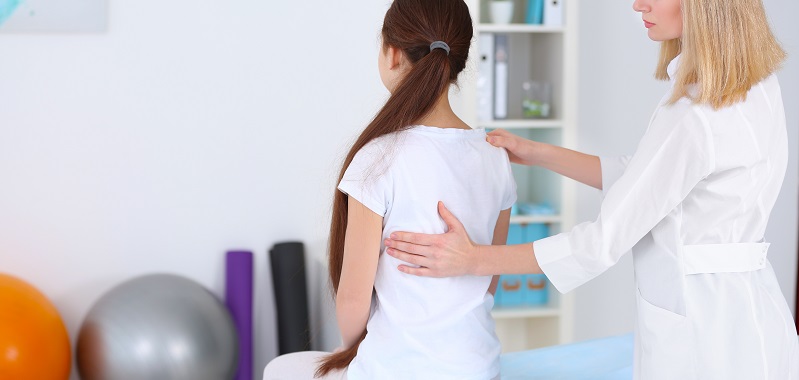Treating Adolescent Idiopathic Scoliosis
Category: Scoliosis | Author: Stefano Sinicropi

Adolescent idiopathic scoliosis (AIS) is the most common form of scoliosis, and it typically affects children and teens between the ages of 10 and 18. It affects as many as four percent of adolescents, and it can take parents by surprise because its onset isn’t always obvious at an early age. In fact, many kids pass their first few scoliosis evaluations before the condition is detected.
But why does the condition develop, and can it be fully treated? We answer those questions and more in today’s blog.
Causes and Symptoms of Adolescent Idiopathic Scoliosis
Medical experts aren’t really sure what causes the condition, but they believe that there are certain factors that can make a person more likely to develop AIS. For example, about 30 percent of patients with AIS have some form of scoliosis in their family history. There is also a belief that the condition is linked to causes like hormonal imbalance, asymmetric spinal development and muscle imbalance.
Most of the symptoms of adolescent idiopathic scoliosis are visible in nature, which include:
- A rib hump, or a prominence on the back which is secondary to the rotational aspect of scoliosis.
- Shoulder height imbalance.
- A torso lean to one side.
- Waistline imbalance
Non-visible symptoms include lower back pain and discomfort, muscle weakness and difficulty breathing as the curvature can put pressure on organs and your lungs.
Diagnosing and Treating Adolescent Idiopathic Scoliosis
The diagnostic process for adult idiopathic scoliosis is pretty straightforward. The spine specialist will begin by taking a look at your spine and your posture, and they’ll also conduct a physical exam. From there, they are going to want to conduct an imaging exam. They may take x-rays in a variety of standing or prone positions, and in rarer cases, and MRI may be conducted if certain neurological abnormalities are discovered during the physical exam.
Treating the condition revolves around the progression of the spinal curve. For patients with minimal curving, observation may be the only treatment method needed, as smaller curves can correct themselves as the child continues to grow. For more pronounced curves, non-operative care is more common, with soft or hard braces helping to shift the spine back into a more natural position.
In patients with severe curves or those who don’t respond well to conservative care, surgery can help to both prevent further curve progression and correct some of the excessive curve. Depending on your situation, the operation can be performed using either a posterior or anterior approach, and most patients are back to normal daily activities 3-4 weeks after the operation.
For more information about AIS, or if you believe your child may have a spinal curvature disorder, reach out to Dr. Sinicropi’s office today.